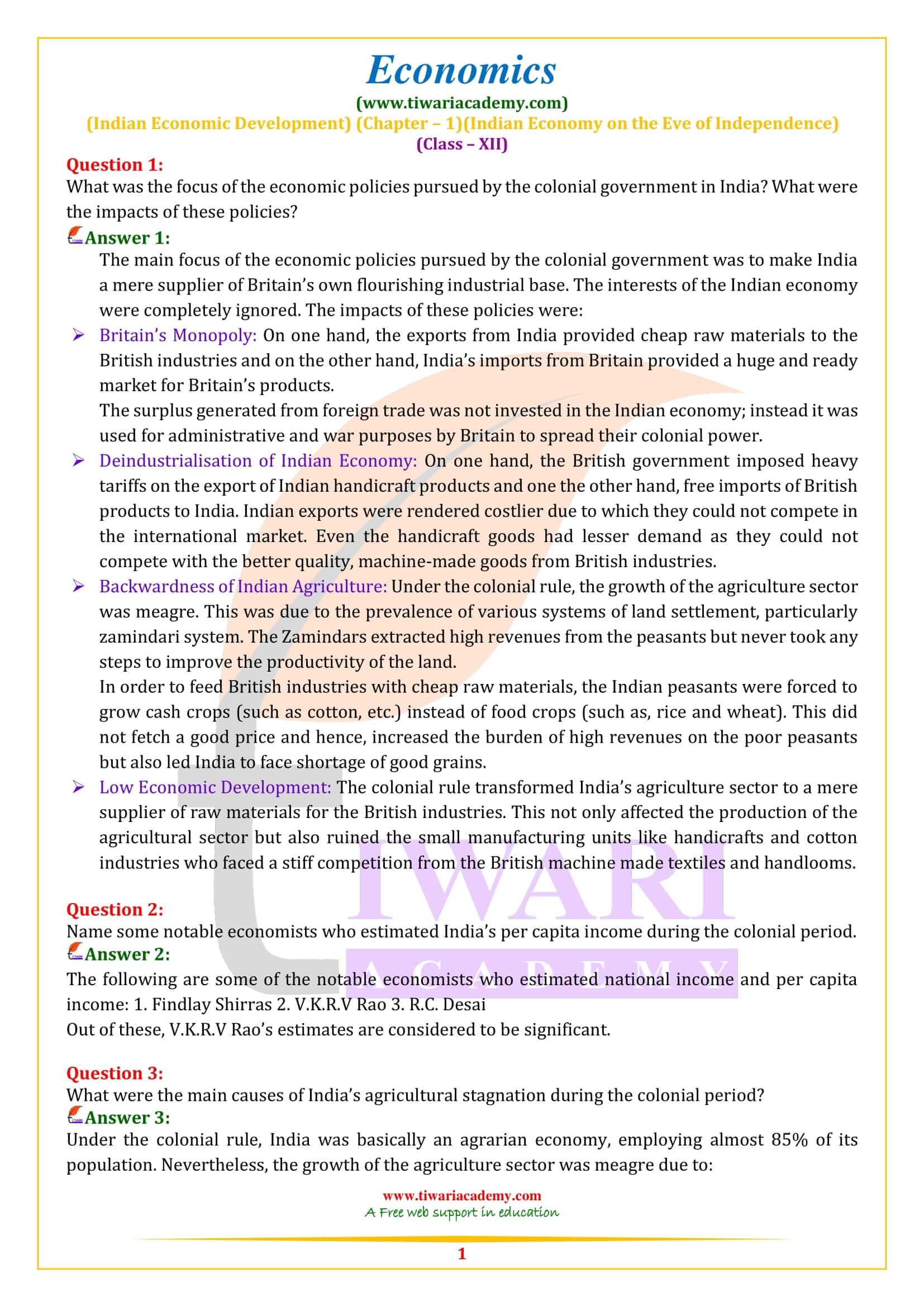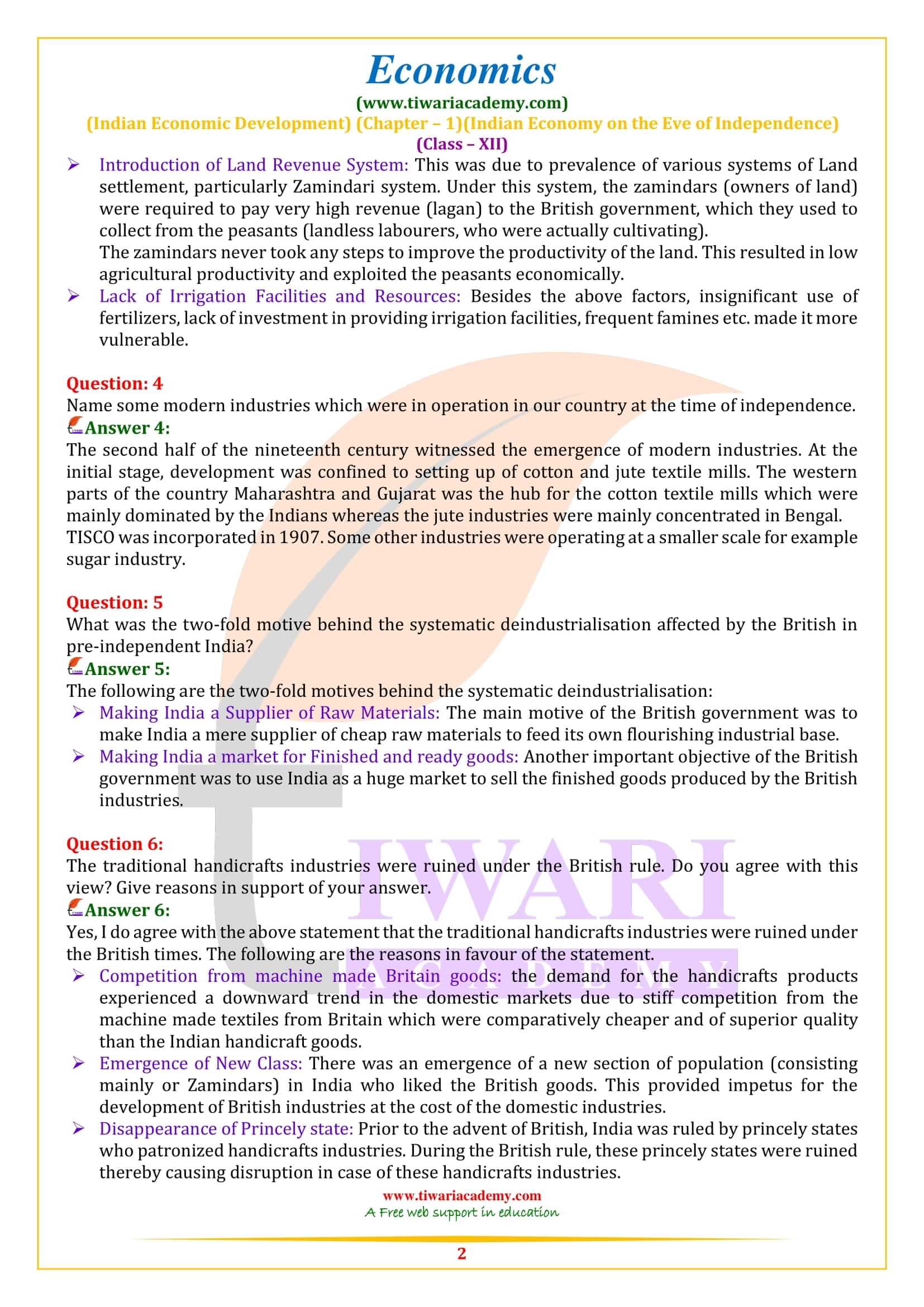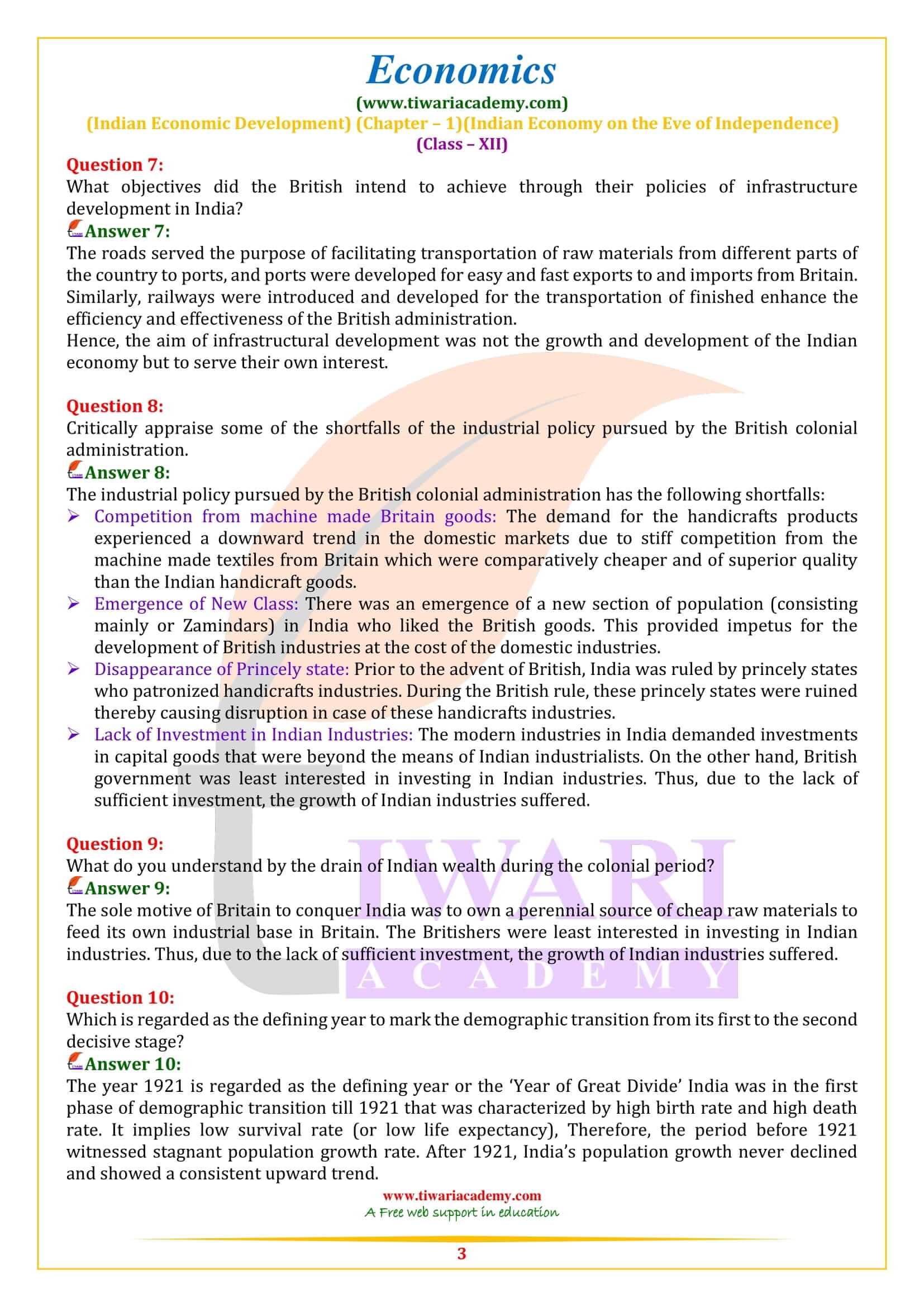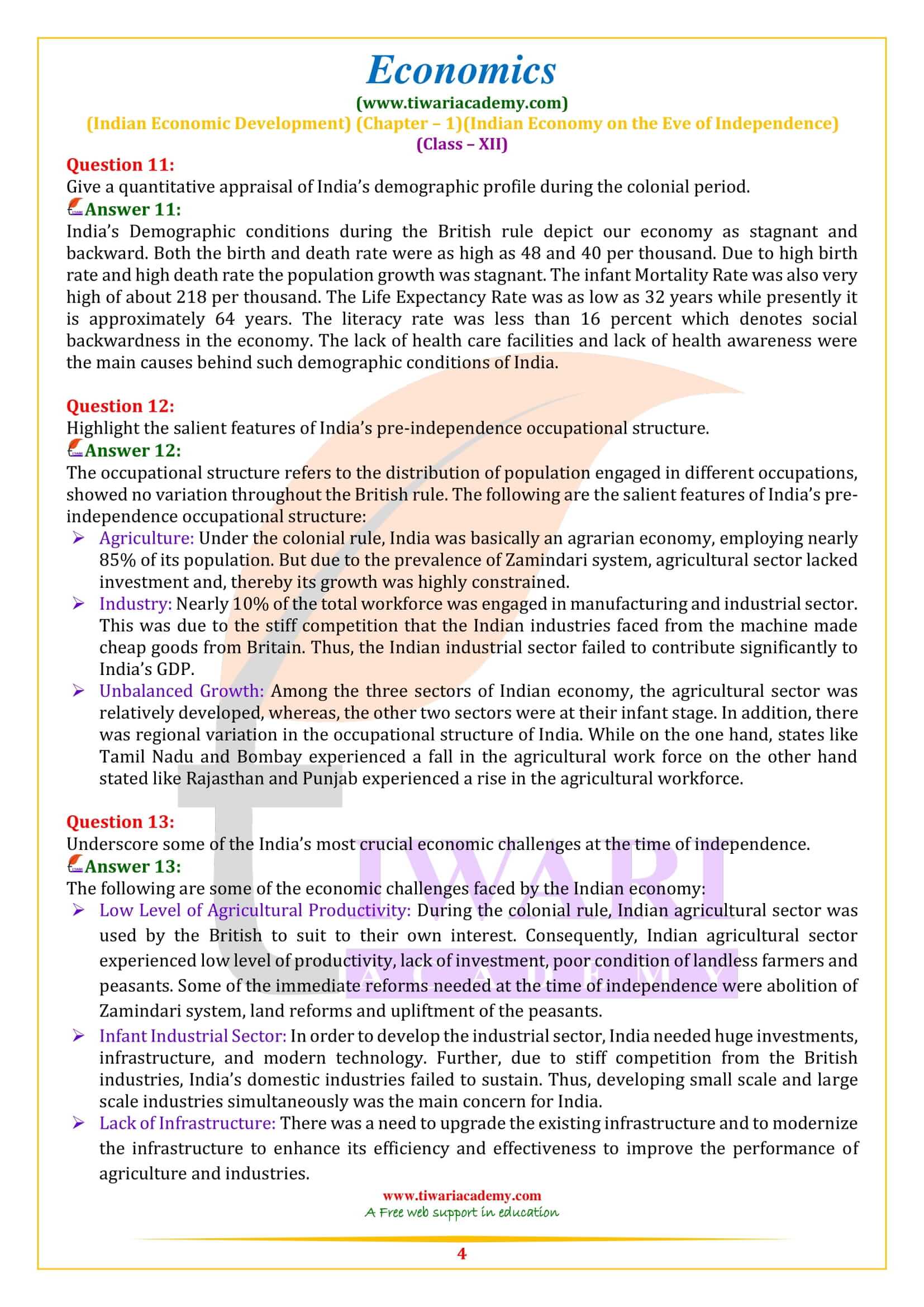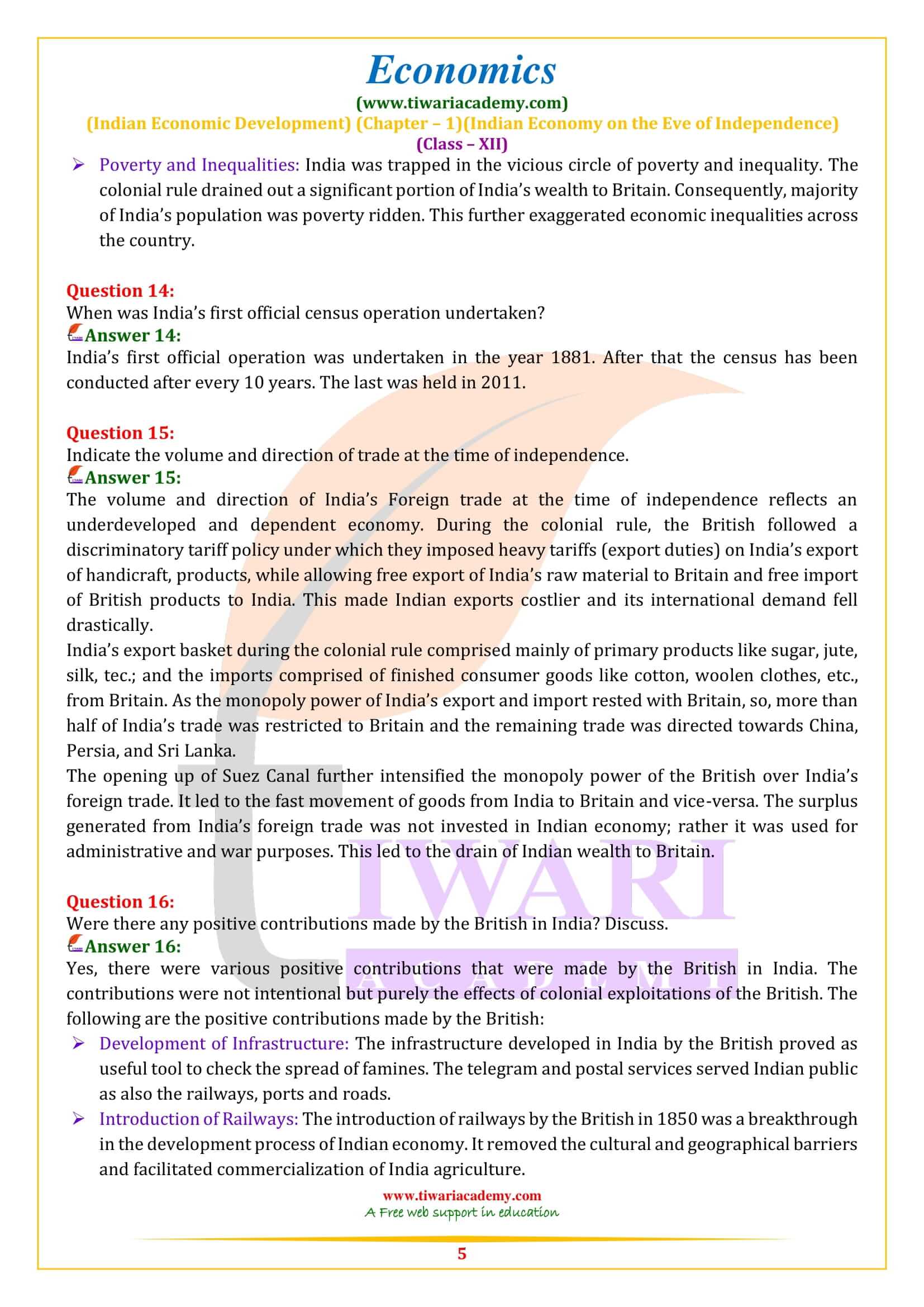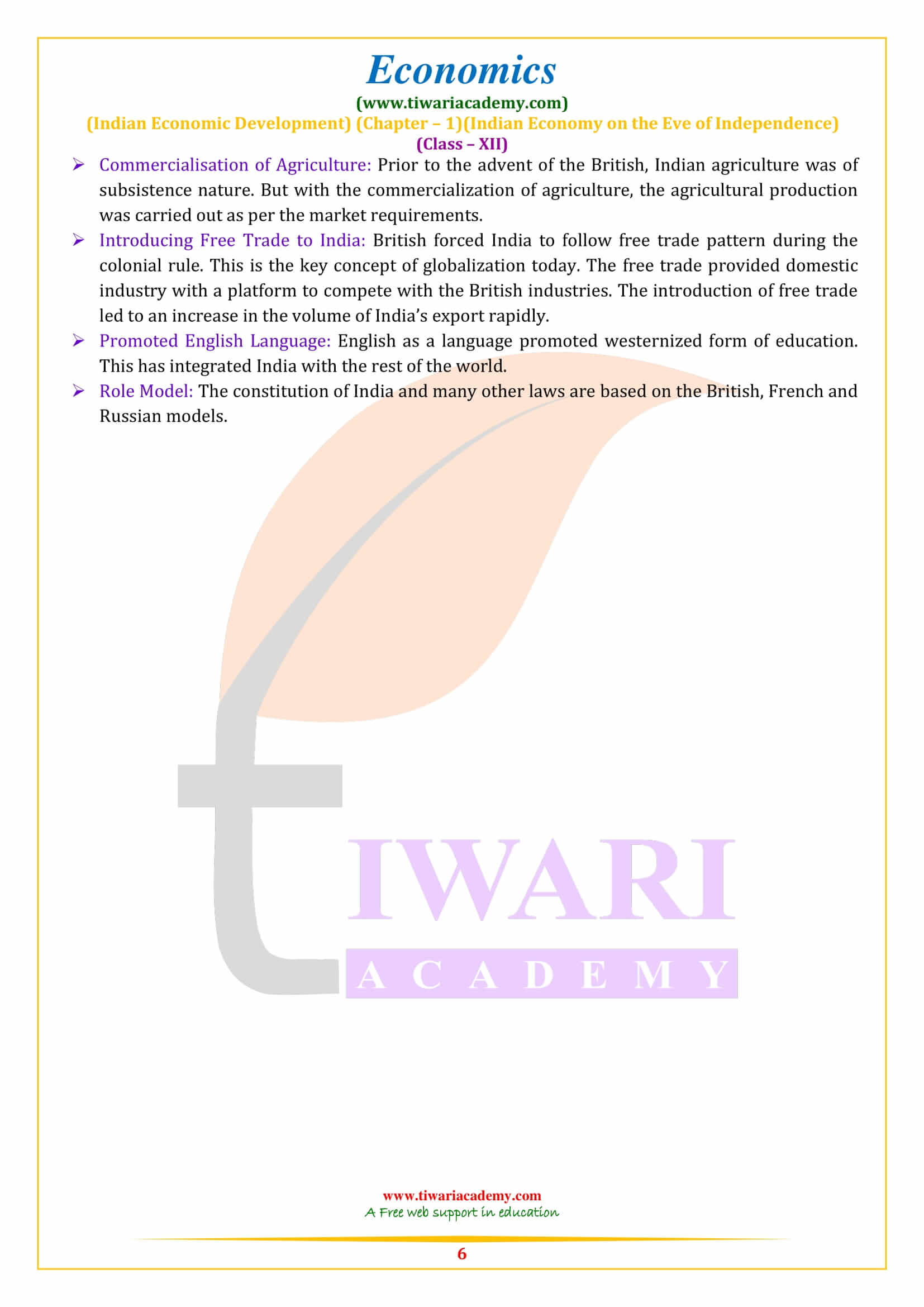NCERT Solutions for Class 12 Indian Economic Development Chapter 1 Indian Economy on the Eve of Independence in Hindi and English Medium question answers for session 2025-26. Class 12 Economics Chapter 1 solutions, important question answers and MCQ are given here with explanation.
Class 12 Indian Economic Development Chapter 1 Question Answers
Low level of economic development under the colonial rule
Several historians purpose to the colonization of India as a significant factor in both India’s deindustrialization and Britain’s Industrial Revolution. British colonization forced open the massive Indian market to British products, that can be sold in India with none tariffs or duties, compared to native Indian producers who were heavily taxed.
In Britain protectionist policies like bans and high tariffs were enforced to limit Indian textiles from being sold there, whereas raw cotton was imported from India without tariffs to British factories which factory-made textiles. British economic policies gave them a monopoly over India’s giant market and raw materials like cotton. India served as both a major provider of raw products to British makers and an outsized captive marketplace for British factory-made products.
Earlier Indian Economy
India had an independent economy before the British Rule. Though agriculture was the first supply of support for many of the people, yet, the country’s economy was defined by numerous forms of producing activities. India was acknowledged for its handicraft industries within the field of cotton and silk textiles, metal and jewellery works, etc. These products enjoyed a worldwide market supported on the reputation of the fine quality of fabric and high customary of craftmanship seen altogether in imports of India.
Development of Indian Economy
The economic policies pursued by the colonial govt of India were involved in a lot with the protection and promotion of the economic interest of their home country than with the development of Indian economy. Such policies caused an elementary modification within the structure of Indian economy, remodelling the country into provider of raw-materials and shopper of finished industrial product from Britain. Obviously, the colonial govt never made any sincere attempt to estimate India’s national and per capita financial gain. Some individual made an attempt that were created to measure such incomes yielded conflicting and inconsistent results.
Agricultural Sector
India’s economy underneath British colonial rule remains essentially agricultural – concerning 85 percent of the country’s population lived principally in villages and derived livelihood directly or in directly from agriculture. However, despite being the occupation of such an outsized population, the agricultural sector continued to expertise stagnation and, not frequently, uncommon deterioration. Agricultural productivity became low though, in absolute terms, sector intimate some growth because of the growth of the aggregate area underneath cultivation. The stagnation within the agriculture was caused chiefly attributable to the varied system of the land settlement that were introduced by the colonial government.
Notably, underneath the zamindari system, that was enforced within the then Bengal Presidency, comprising parts of India’s current-day eastern state, the profit accruing out of the agriculture sector went to the zamindars rather than the cultivators. However, a substantial range of zamindars, and not simply the colonial government, did nothing to enhance the condition of agriculture.
The primary interest of the zamindars was solely to gather rent despite of the economic conditions of the cultivators; this caused immense misery and social tension among the latter. To an awfully nice extent, the terms of the revenue settlement were conjointly liable for the zamindars adopting such an attitude; dates for depositing nominal sums of the revenue were mounted, failing that the zamindars were to lose their rights.
Lack in modern technologies
Besides this, the low levels of technology, lack of irrigation facilities and negligible use of fertilizers, all added up to worsen the plight of the farmers and contributed to the dismal level of agricultural productivity. There was, of course, some proof of a comparatively higher yield of money crops in bound areas of the country because of commercialisation of agriculture. Whereas, a tiny section of farmers modified their cropping pattern from food crops to business crops, an outsized section of tenants, tiny farmers and sharecroppers neither had resources and technology nor had incentive to take a position in agriculture.
Industrial Sector
As within the case of agriculture, therefore conjointly in producing, India couldn’t develop a sound industrial base beneath the colonial rule. Whilst the country’s world-famous handicraft industries declined, no corresponding trendy industrial base was allowed to come back up to require pride of place that was longevity enjoyed by the former. The first motive of the colonial government behind this policy of consistently de-industrialising India was two-fold. The intention was, first, to scale back India to the standing of a mere exporter of necessary raw materials for the approaching trendy industries in United Kingdom and, second, to turn India into a sprawling marketplace for the finished merchandise of these industries so their continued enlargement may be ensured to the utmost advantage of their home country – United Kingdom.
Low Cost Factory made Products
Within the flowering economic situations, the decline of the autochthonal handicraft industries created not solely large unemployment in India however conjointly a replacement demand within the Indian client market that was currently bereft of the provision of regionally created products. This demand was fruitfully met by the increasing imports of low-cost factory-made products from United Kingdom. Throughout the half of the nineteenth century, trendy industry began to acquire root in India however its progress remained terribly slow. Initially, this development was confined to the fixing of cotton and jute textile mills.
The cotton textile mills, chiefly dominated by Indians, were set within the western parts of the country, namely, Maharashtra and Gujarat, whereas the jute mills dominated by the foreigners were chiefly targeted in Bengal. Later on, the iron and steel industries began arising within the starting of the 20th century. The Tata Iron and Steel Company (TISCO) was incorporated in 1907. A number of alternative industries within the fields of sugar, cement, paper etc. came up once the Second World War. However, there was hardly any capital products industry to assist promote additional industrial enterprise in India.
What is the importance of chapter 1 in class 12th as overall scheme of the subject?
Chapter 1 explains why the country is facing what it is facing right now. The root of the problems lies in the massive exploitation of Indian economy by the British for as long as 150 to 200 years.
What are the important contents in examination point of view chapter 1 Indian economy of the eve of independence?
The causes of backwardness of Indian agriculture, the systematic destruction of Indian industries and the measures taken by British to develop the infrastructure of the country are some of the important topics in chapter 1.
Why is it necessary to study the shape of Indian economy even after 75 years of independence in class 12?
As a student, you will be able to appreciate how India faced a herculean task of developing a nation as diverse as India with multitude problems. India has hostile neighbours and huge amount spent on unproductive expenses like interest and subsidies. Very little amount is left for development of infrastructure.
